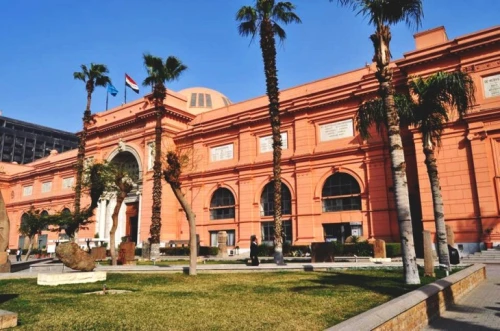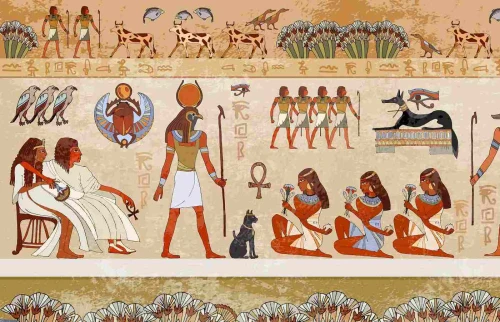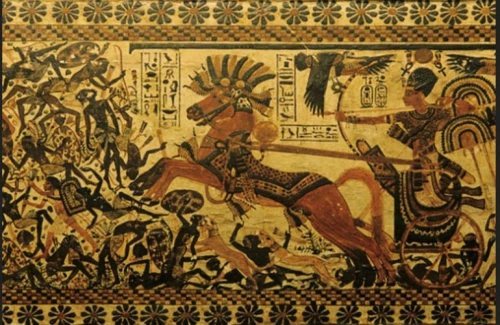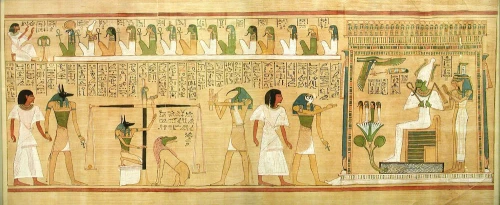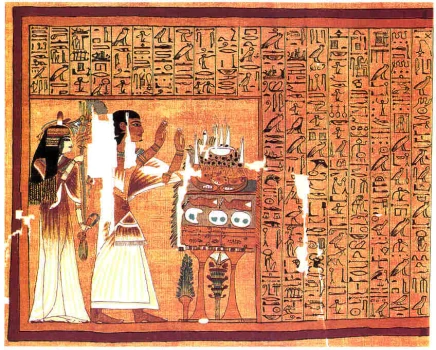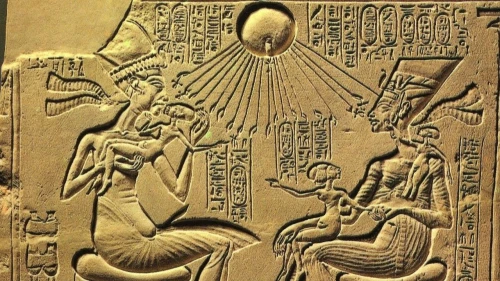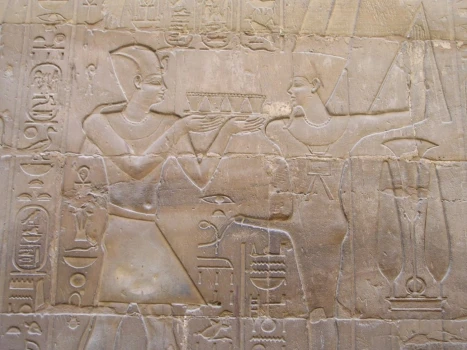
FERTILITY, GODS OF See Min and Osiris.
FESTIVALS Numerous festivals were scheduled throughout the year in ancient Egypt to honor the gods in their temples some were local celebrations, and some were celebrated throughout the land. A festival usually began with a procession of the cult statue by the priests, who were accompanied by musicians and dancers. Sometimes the statue traveled in procession from one temple to another, spending a certain number of days in the second temple before returning. Such was the case with the Opet Festival when a statue of Amun traveled from Karnak to Luxor temple.
A “calendar of festivals” inscribed on the southern wall of the temple of Medinet Habu (west bank of the Nile in Luxor) by Ramses III, lists some 60 different festivals. All the festivals of Amum are included with a long list of requirements for each feast and with a note about which treasury will pay for them.
The list also includes the 365 daily offerings and the eight “feast of heaven” days. Following are some of the major annual festivals:
The Festival of the King’s Coronation on the twenty-sixth of pakhons, the ninth month (originally one day, but lengthened to 20 days). The Festival of the New Year corresponds with the rising of Sirius, the brightest star in the sky. The Festival of Opet is on the nineteenth day of paophi, the second month, for 24 days. The Beautiful Festival of the Valley, a procession of Amun, Mut, and Khonsu.
The food offerings for a festival varied greatly: One required 84 loaves of bread, for example, while another required more than 4,000. During the festival, the extra food not used by the priests was distributed to the people. FIELD OF REEDS (also SEHET AARU or ELYSIAN FIELDS) A mythological realm of the western sky, where crops in the fields grow to enormous heights.
The goddess associated with the Field of Reeds was called Neheb-Kau and was often shown as a serpent with wings and the arms and legs of a woman. In her hands, she carries two pots of food for the souls of the dead. Mention of the Field of Reeds first occurs in the Pyramid Texts:
Cleansed is he who is cleansed in the Field of Reeds Cleansed is Re in the Field of Reeds Cleansed is he who is cleansed in the Field of Reeds Cleansed is this Unas in the Field of Reeds Hand of Unas in the hand of Re! O Nut take his hand! O Shu, lift him! O Shu, lift him!
In the Middle Kingdom (2055 - 1650 B.C), the Coffin Texts suggest that the deceased will be required to labor in the Field of Reeds, and at about the same time the Coffin Texts were written, magical figures called ushabtis were introduced. Each ushabti was given a magical spell so that when the deceased was called upon to work in the Field of Reeds, the ushabti would answer for the deceased and perform the work. The concept of the Field of Reeds was expanded during the New Kingdom (1550 - 1069 B.C) when it was regularly included in the vignettes that decorated the Book of the Dead. According to Osirian mythology (see Chapter 145 of the Book of the Dead), the deceased was required as part of his passage into the next world to spend time working in the Field of Reeds.
In another, there was a fabled place called the Field of Reeds, where the farms produced harvests of astounding proportions. This tomb painting depicts the deceased gathering grain with his wife. According to the (Images by Pat Remler) version, the deceased's ultimate goal was to purchase a plot of land after his journey through the Underworld was complete and he had been found not guilty (see Weighing of the Heart Ceremony).
This represented his return to the Field of Reeds, the Netherworld, and his resume of his worldly pursuits. The departed is frequently seen in the vignettes of the Book of the Dead ploughing, sowing, and harvesting, occasionally with his wife, and they are always dressed in their nicest attire as if they were on vacation. Although the Field of Reeds' precise location is unknown, the Book of the Dead appears to indicate that it is somewhere in the Netherworld.
It was claimed that the wheat and barley that grew to such great heights in the Field of Reeds were nourishment for the dead, similar to the nectar and ambrosia of the gods. That wasn't like the genuine food sacrifices made for the dead on Earth. Throughout the years, numerous writings have speculated that the Field of Reeds may have also existed on Earth, maybe in the eastern Delta, on a delta island, or in the far-off Kharga Oasis. The phrase "field of reeds subsequently become a euphemism for either death or the Netherworld.
 English
English
 Spain
Spain

